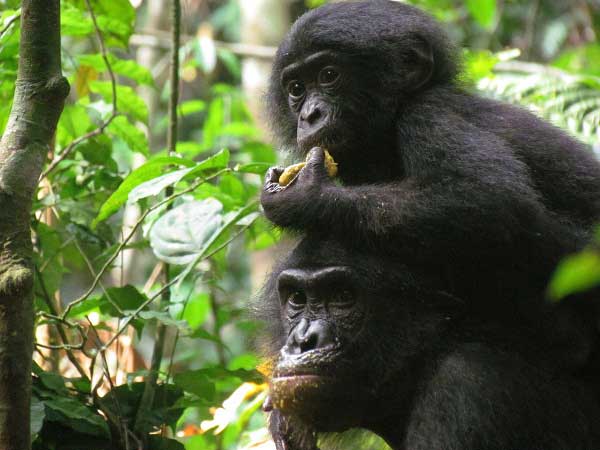English report
AS-HOPE 事業報告
事業番号:AS-24-007
Study on female social behaviors according to their life history
報告者:柳興鎭
期間:201/5/26 - 201/9/27
Wild bonobos are only found in the Democratic Republic of the Congo. So, itis necessary to go to DR Congo to conduct research on the wild population. Andmy research topic is focused on female reproductive strategy which I assumed that it depends upon their life history issue. In particular I want to
compare each female's sociality according to a female's age and sex and age of its children. For the reasons I should do conduct research on well-known bonobo population. Japanese researchers have conducted researches on one community bonobo at Wamba for around 40 years, and therefore its demographic
information is also well-known. It is ideal and suitable for me to conduct my research there. Although there are some captive bonobo populations in the world, they are under control for population management or another purpose. Therefore it
is necessary for me to go to the DR Congo to conduct research on bonobo.
It was my second field trip to Wamba, DR Congo to conduct a field study on bonobos. I used the same one animal focal following method with help of one tracker to compare social behavior of females according to their life history issue. During 3 month and half, I was able to collect ca. 180 hours of focal animal following data. One of the most impressive events during this field trip was inter-group encounter. The main study group (E1) moved to home range of another group (P) and encountered with p-east group which has been fully identified and habituated recently. It was very exciting moment and I could see how they are different from their nearest relative chimpanzees. Although there were some tensions among members of two different groups, they were able to range together and do inter-group social interaction such as grooming and
copulation. Interestingly, male-male coalitionary agonistic interactions, which have been very rarely observed in intra-group agonistic interactions among males, were observed, when males in each group were involved in inter-group agonistic interactions, such as threatening, display and physical attack. It gave me a very valuable chance to contemplate capacity and potential of their behavior and this will be a very fruitful experience for my future study.

Food sharing of a mother Bonobo and her infant

View of rainforest from charter plane
AS-HOPE Project< > >
|







